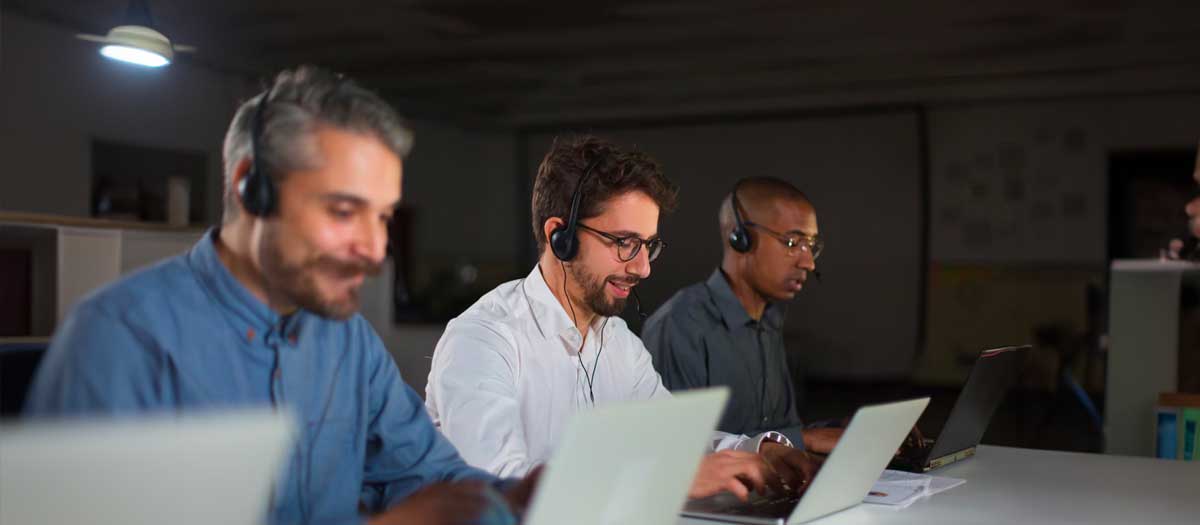The Evolution of Work
If you were to build an office time machine and step back 20 years, you’d find yourself in a world of noisy fax machines, clunky office phones, and stacks and stacks of paper. Contrast that with today’s hyper-efficient workspaces, operating in the cloud and across multiple devices.
Modern-day technology has transformed the way we work, making it easier to communicate, collaborate, track our progress, and stay productive. Digital tools, combined with emerging insights around the psychology of how and why we work, have ramped up efficiency across all industries.
And there’s more to come. The pace of change means that new tools and techniques are always just around the corner. The most successful workplaces are those that stay ahead of the curve, using the latest technology to remain nimble and profitable in challenging times.
From 2000 to present day
Communication & Collaboration - By the end of the 90s, the fax machine had become obsolete, killed by email which could be used to send documents instantly and effortlessly.
Now, offices communicate and collaborate in real-time, even if team members are on separate sides of the globe. Phone calls and in-person conferences have been largely replaced by online chat, virtual meetings, or VoIP. Skype came to market in 2003, and multiple affordable options came after which replaced costly A/V setups for video conferencing - including now-ubiquitous Zoom & Google Meet.
Workflows - The 2000s may have brought the dotcom bust, but that didn’t stop technology continuing its march through the workforce. Offices that had previously relied on reams of spreadsheets turned to productivity tools like CRMs and project management platforms to stay organized.
The 2010s was the decade that brought us Slack, Microsoft Teams, and G Suite (now Google Workspace). With the emergence of the cloud, workers were able to store and share large volumes of data online, further improving productivity. This hastened the move to remote or hybrid work models, which accelerated during and post-pandemic.
Leadership - It’s not just our tools that have changed throughout the past 20 years. Office culture also underwent a makeover, adopting a more people-focused approach. Some of the biggest trends have been a focus on employee wellness, greater diversity and inclusion, and softer leadership styles.
Open space offices became popular in the 2000s, prompting a new style of oversight, known as ‘Management by walking around.’ Managers would wander between desks, addressing problems on the office floor rather than calling employees into their office.
Intended to make managers more approachable and engaged, this style was relatively popular but hasn’t survived the switch to remote workplaces and cloud-based task management. Now, managers are more likely to rely on Employee Productivity Monitoring (EPM) software and other new technologies.
Emerging technologies
Analysts at Gartner classify EPM as an emerging trend within human capital management and the digital workplace, and note that use of the technology saw a ‘substantial’ increase during the pandemic.
With the transition to remote working, employers are increasingly using EPM to maintain oversight outside of the office. EPM platforms use automated data collection to track employee activity, generating invaluable analytics that can be used to prevent burnout, help remote teams work together more effectively, and identify productivity gaps. Gartner predicts the technology will be as common in offices as email within the next two to five years.
EPM solution Prodoscore is an unobtrusive monitoring solution that gauges how your workforce is using company digital tools to give each employee, and each team, an overall productivity score. This score lets managers know how their team is doing, showing who is in danger of falling behind, and who is surpassing expectations.
The cutting-edge technology boosts employee engagement while giving managers the insight they need to motivate and protect their workers. Contact Prodoscore today to book a demonstration and find out more.
